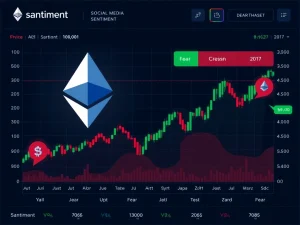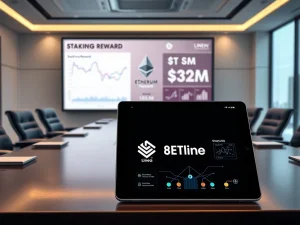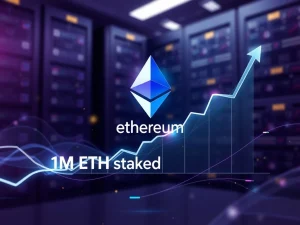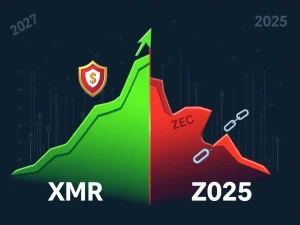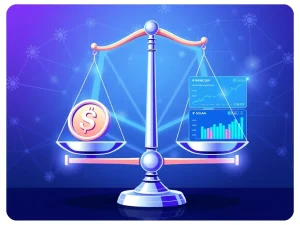HBAR Unleashes Explosive 7% Surge: Robinhood Listing & ETF Hopes Fuel Hedera’s Momentum
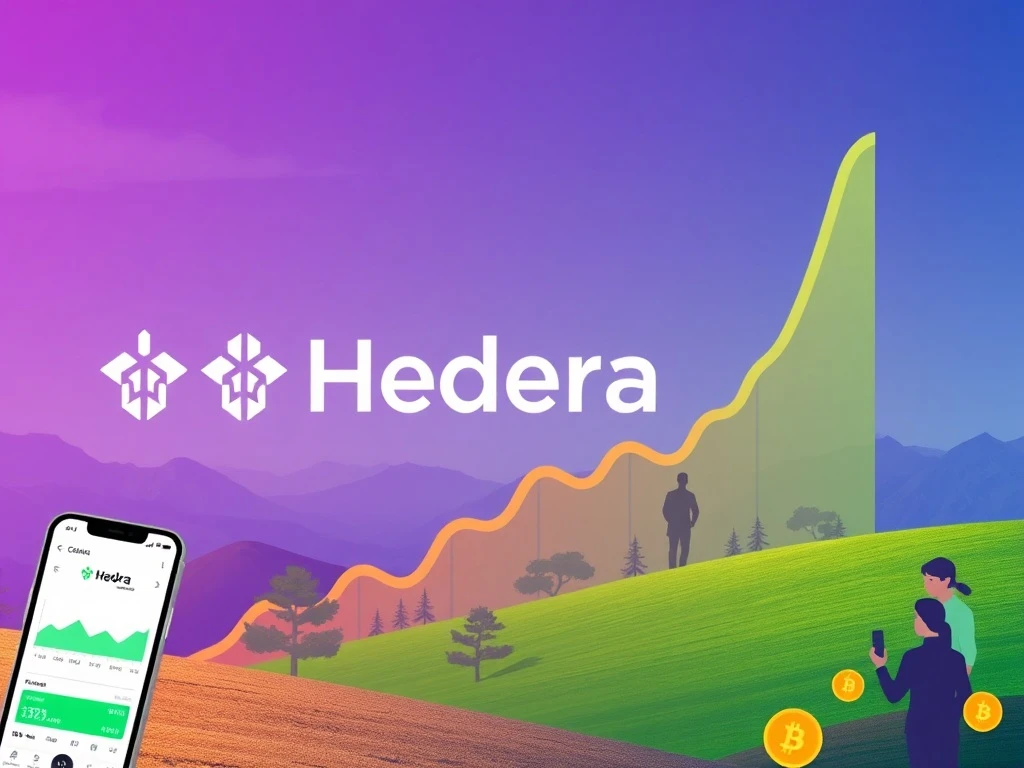
In the dynamic world of digital assets, few stories capture attention like a sudden surge. Today, all eyes are on Hedera (HBAR), which has seen an impressive 7% gain, largely propelled by its strategic listing on Robinhood. This isn’t just another price bump; it signifies a pivotal moment for HBAR, expanding its reach to millions of retail investors and hinting at a broader shift in the crypto landscape.
Why the HBAR Price is Soaring: The Robinhood Effect
Hedera (HBAR) has captured significant market attention, experiencing a notable 7% price increase following its recent listing on Robinhood. This development, announced on July 25, 2025, is more than just a new trading option; it’s a strategic expansion into a massive retail-focused audience. Robinhood boasts over 20 million monthly active users, a demographic known for favoring mobile-first trading platforms over traditional, more complex exchanges. This direct access to such a vast and engaged user base is expected to amplify HBAR’s visibility and demand, particularly among younger investors eager to participate in the digital asset economy.
The immediate impact of the Robinhood listing underscores the platform’s influence in the crypto space. By offering HBAR, Robinhood not only diversifies its crypto portfolio but also signals its ambition to compete head-on with established exchanges like Coinbase and Binance.US. This move positions Hedera for broader adoption, as it becomes more accessible to the everyday investor, potentially driving its Hedera price upward through increased liquidity and trading volume.
Unpacking the Impact of the Robinhood Listing
The decision to include HBAR on Robinhood aligns with several key market trends and regulatory shifts. Firstly, it highlights Robinhood’s aggressive strategy to capture a larger share of the mainstream digital asset market. The platform’s user-friendly interface and mobile-first approach make it an ideal gateway for new entrants into cryptocurrency, and the inclusion of a utility-focused token like HBAR could attract users looking for more than just speculative assets.
Secondly, the regulatory climate in the United States has played a contributing role. The SEC’s recent decision to drop enforcement actions against Robinhood for crypto trading violations has signaled a more accommodating stance toward crypto platforms. This regulatory clarity reduces operational barriers, encouraging platforms like Robinhood to pursue more aggressive listing strategies. This shift, combined with a broader political environment that appears increasingly open to digital assets, creates a favorable backdrop for significant platform expansions.
The Robinhood listing is not an isolated event. It coincides with similar moves by other major exchanges, including Binance and Kraken, which have also added HBAR to their offerings. This trend reflects a growing institutional and retail appetite for accessible, utility-focused cryptocurrencies, positioning HBAR as a token with increasing mainstream appeal and liquidity.
The Road Ahead: What Do Crypto ETFs Mean for Hedera?
Beyond the surge in retail crypto adoption driven by the Robinhood listing, institutional interest in HBAR is also gaining significant traction. Leading financial firms like Grayscale and Canary Capital have submitted filings with the SEC to launch HBAR-focused exchange-traded funds (ETFs). While no concrete ETF launches have materialized yet, the anticipation of such products has already fueled speculative demand, particularly among investors seeking regulated exposure to blockchain-based utilities.
The potential for Crypto ETFs focused on HBAR is a monumental development. ETFs offer a familiar and regulated investment vehicle for traditional finance participants, making it easier for large institutions, wealth managers, and even retail investors to gain exposure to HBAR without directly holding the underlying asset. Canary Capital’s early filing in November marked a proactive push for institutional adoption, aiming to position the firm at the forefront of efforts to create regulated investment products for Hedera. Should these ETFs receive approval, they could unlock substantial capital inflows, further solidifying HBAR’s legitimacy within traditional finance and potentially impacting its Hedera price trajectory.
Beyond the Buzz: Understanding Hedera Price Drivers
Market analysts consistently highlight that HBAR’s performance is closely tied to its real-world utility rather than purely short-term speculation. Hedera’s unique strengths lie in its enterprise-grade blockchain solutions, leveraging its energy-efficient hashgraph consensus mechanism and robust partnerships with corporations and governments. These partnerships, spanning areas like supply chain management, identity verification, and decentralized applications, have historically driven demand for the HBAR token.
The Robinhood listing could significantly amplify this effect by introducing the asset to a much broader audience of retail investors who might be drawn to its fundamental utility rather than just its trading potential. Platforms like Robinhood play a pivotal role in normalizing crypto ownership, particularly among first-time investors, and the inclusion of HBAR may signal confidence in its long-term value proposition and its role in practical blockchain solutions.
However, investors must remain cautious of the crypto market’s inherent volatility, which can be exacerbated by regulatory shifts or broader macroeconomic conditions. While HBAR benefits from increased accessibility and institutional interest, it faces stiff competition from rapidly growing blockchains like Solana and Ethereum, which offer similar or overlapping use cases. Hedera’s ability to maintain its competitive edge will depend on its continued innovation and the successful execution of its enterprise partnerships.
Navigating the Future: The Rise of Retail Crypto Adoption
The confluence of Robinhood’s listing and prospective ETF filings positions HBAR for a potentially transformative phase. Increased accessibility for retail traders, combined with burgeoning institutional interest in regulated investment products, could create a robust demand foundation for Hedera. This dual momentum is a powerful indicator of HBAR’s expanding relevance in the crypto ecosystem.
As of July 18, 2025, HBAR traded at $0.238685, reflecting a mix of speculative excitement and fundamental drivers. The token’s trajectory will likely depend on upcoming regulatory developments and the pace of institutional adoption, particularly the approval of Crypto ETFs. The ongoing rise of retail crypto adoption, facilitated by platforms like Robinhood, will continue to be a critical factor in HBAR’s market performance, alongside its commitment to real-world utility and enterprise solutions.
In conclusion, HBAR’s recent surge is a testament to the growing convergence of retail accessibility and institutional validation in the crypto market. The Robinhood listing has opened new avenues for millions of potential investors, while the anticipation of ETFs signals a deeper integration into traditional finance. While the path forward will undoubtedly have its challenges, Hedera’s strong utility proposition and increasing market exposure paint a compelling picture for its future within the evolving digital economy.
Frequently Asked Questions (FAQs)
What is Hedera (HBAR)?
Hedera (HBAR) is the native cryptocurrency of the Hedera network, an enterprise-grade public ledger that utilizes a hashgraph consensus mechanism. Unlike traditional blockchains, Hedera aims to provide a faster, more secure, and energy-efficient alternative for decentralized applications and enterprise solutions. HBAR is used for network fees, staking, and powering services on the Hedera network.
Why is the Robinhood listing significant for HBAR?
The Robinhood listing is highly significant because it exposes HBAR to Robinhood’s vast user base of over 20 million monthly active users, many of whom are retail investors new to crypto. This increased accessibility can lead to higher trading volume, improved liquidity, and greater public awareness, ultimately boosting demand and potentially the Hedera price.
What role do Crypto ETFs play in HBAR’s future?
Crypto ETFs, particularly those focused on HBAR, could revolutionize institutional investment in the token. ETFs provide a regulated and familiar investment vehicle for traditional financial institutions and accredited investors, allowing them to gain exposure to HBAR without the complexities of direct crypto ownership. Approval of such ETFs could unlock substantial capital inflows, enhancing HBAR’s legitimacy and market stability.
What are Hedera’s unique strengths compared to other blockchains?
Hedera distinguishes itself through several key strengths: its unique hashgraph consensus mechanism offers high transaction speeds and low latency; it is highly energy-efficient, consuming significantly less power than many proof-of-work blockchains; and it focuses heavily on enterprise-grade solutions and real-world utility, securing partnerships with major corporations and governments for applications in areas like supply chain management and identity verification.
What are the risks associated with investing in HBAR?
Like all cryptocurrencies, HBAR is subject to significant market volatility, meaning its price can fluctuate dramatically. Other risks include regulatory changes that could impact crypto platforms or tokens, macroeconomic conditions affecting investor sentiment, and intense competition from other rapidly developing blockchain networks like Ethereum and Solana. Investors should conduct thorough research and consider their risk tolerance before investing.



